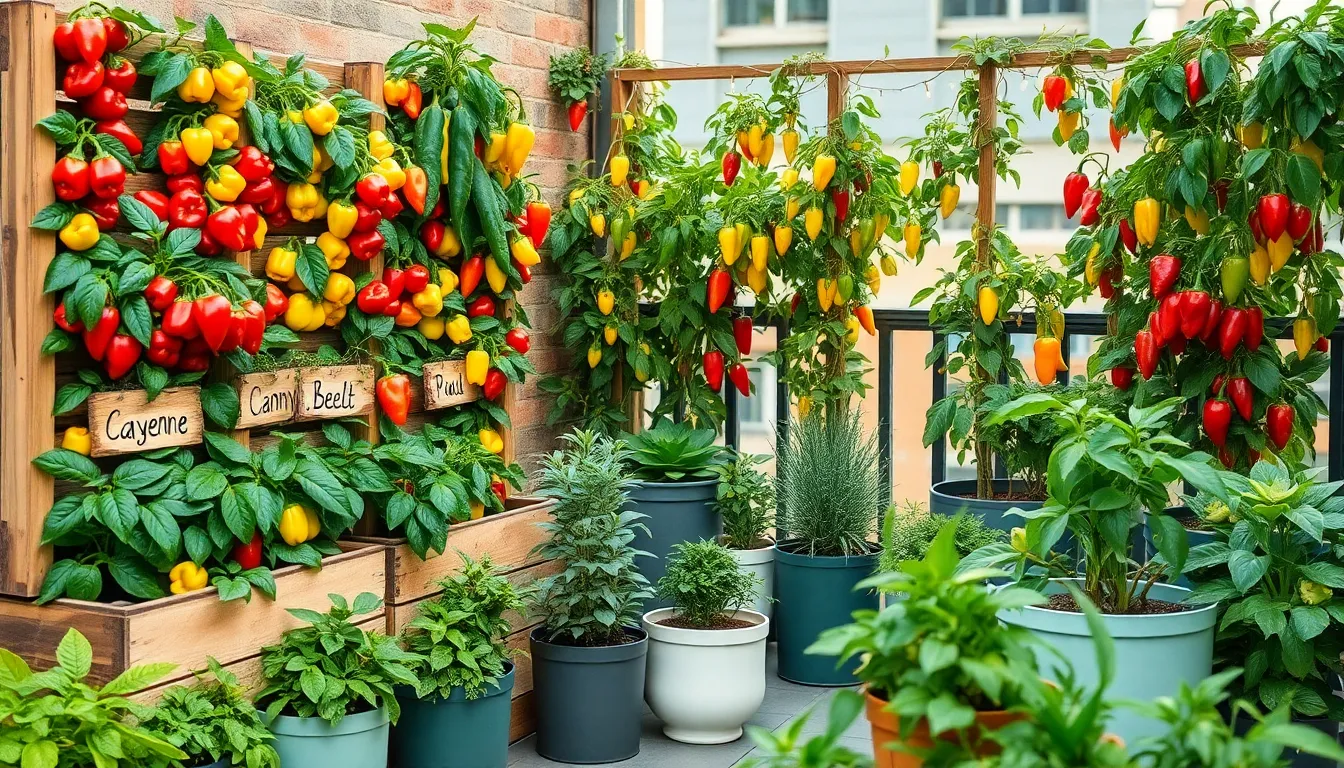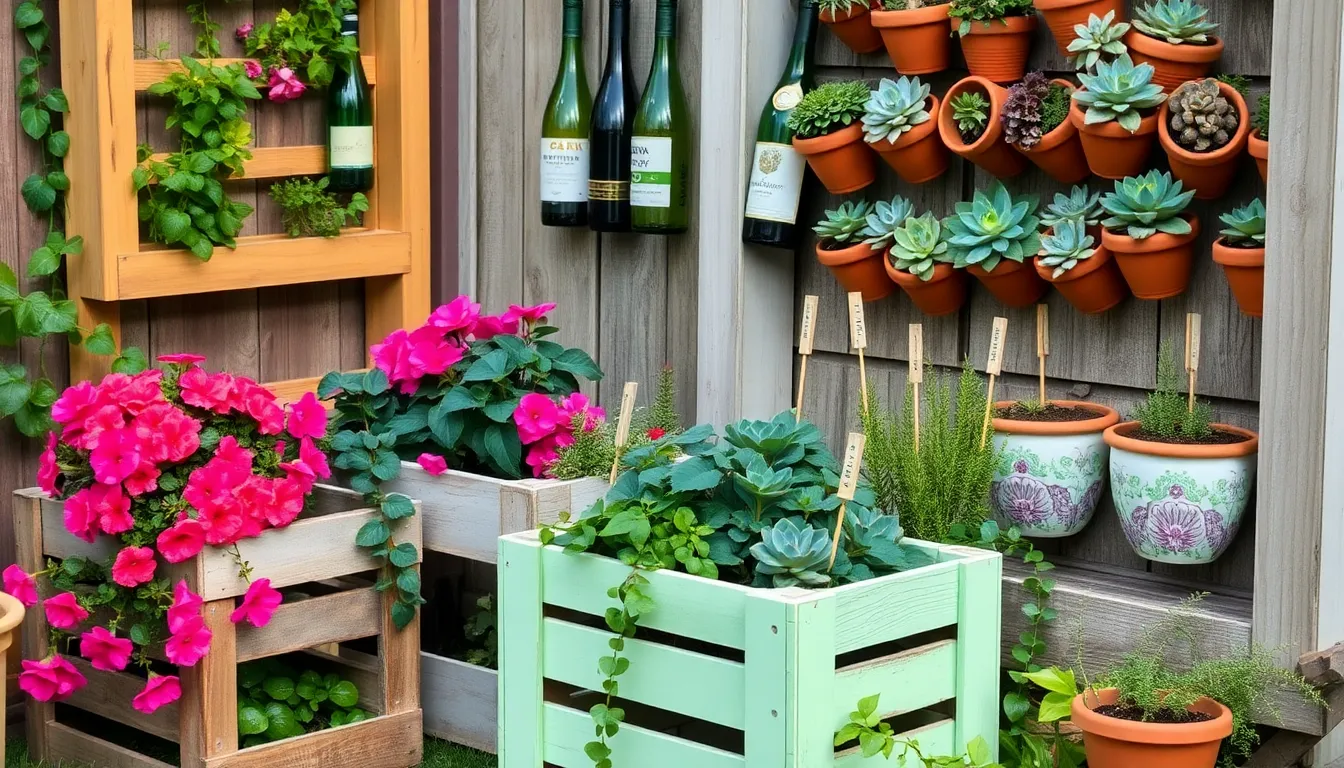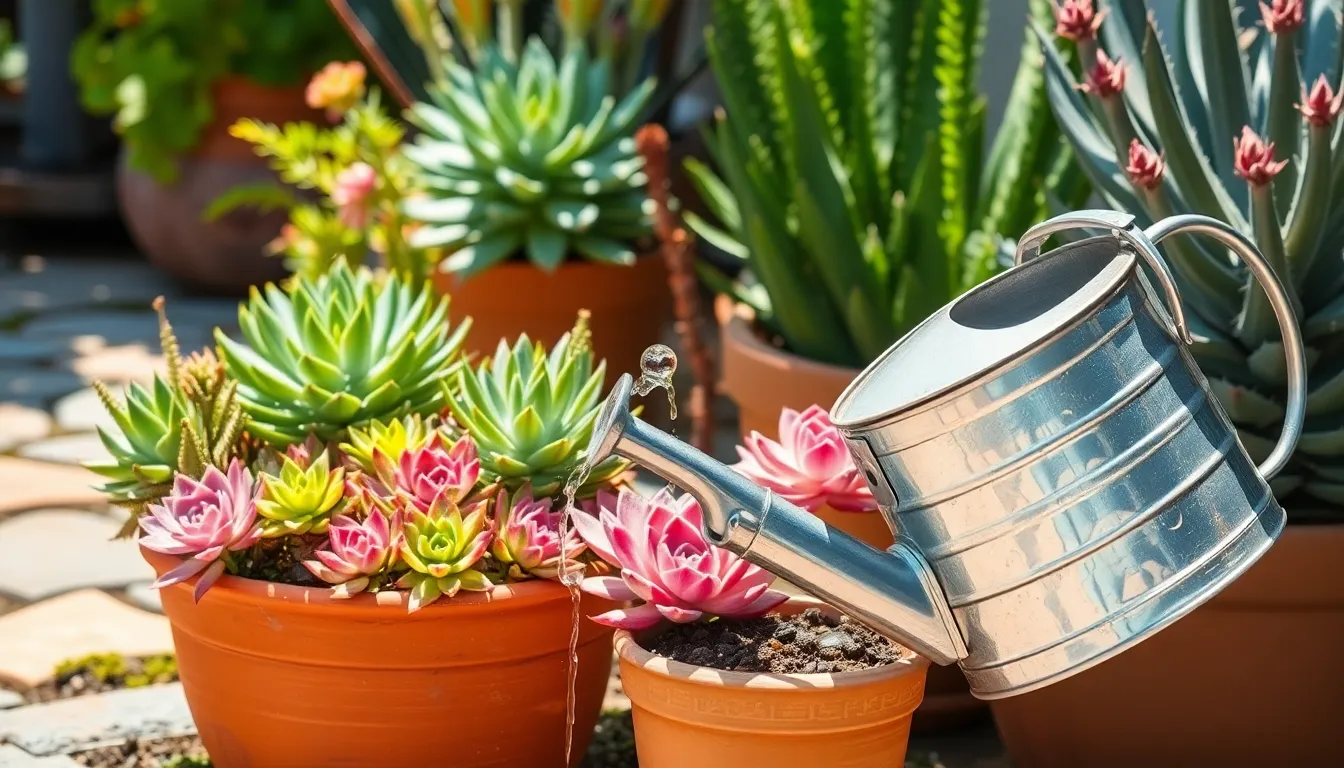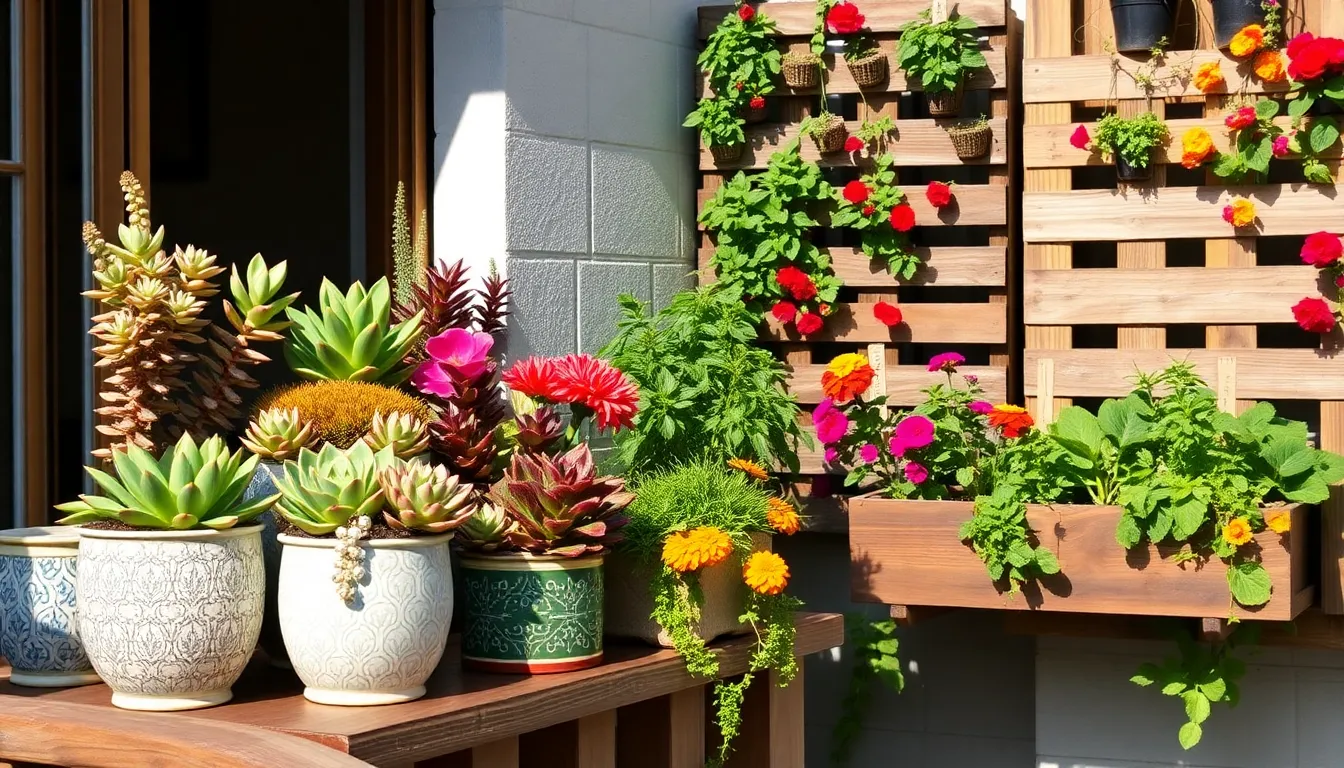Imagine stepping out onto your balcony or into your cozy backyard, plucking a vibrant pepper from your very own plant, and savoring the satisfaction of having grown it yourself. Whether you’re a newcomer to the gardening world or a seasoned green thumb, the art of cultivating peppers in small spaces offers both a delightful challenge and a rewarding harvest. Small-space gardening is more than just a trend; it’s a practical solution to urban living and a testament to the resilience and adaptability of nature.
In this article, you’ll discover how even the smallest nooks of your home can become thriving micro-gardens brimming with colorful peppers. From choosing the right varieties to maximizing sunlight and creating the ideal growing conditions, we’ve got you covered with tips and techniques tailored to compact environments. You’ll learn how to select containers that perfectly fit your space, and how to nurture peppers with precision watering and care. Embrace the joy of transforming limited areas into lush, productive pepper paradises, and let your gardening endeavors flourish regardless of square footage.
Select Compact Pepper Varieties
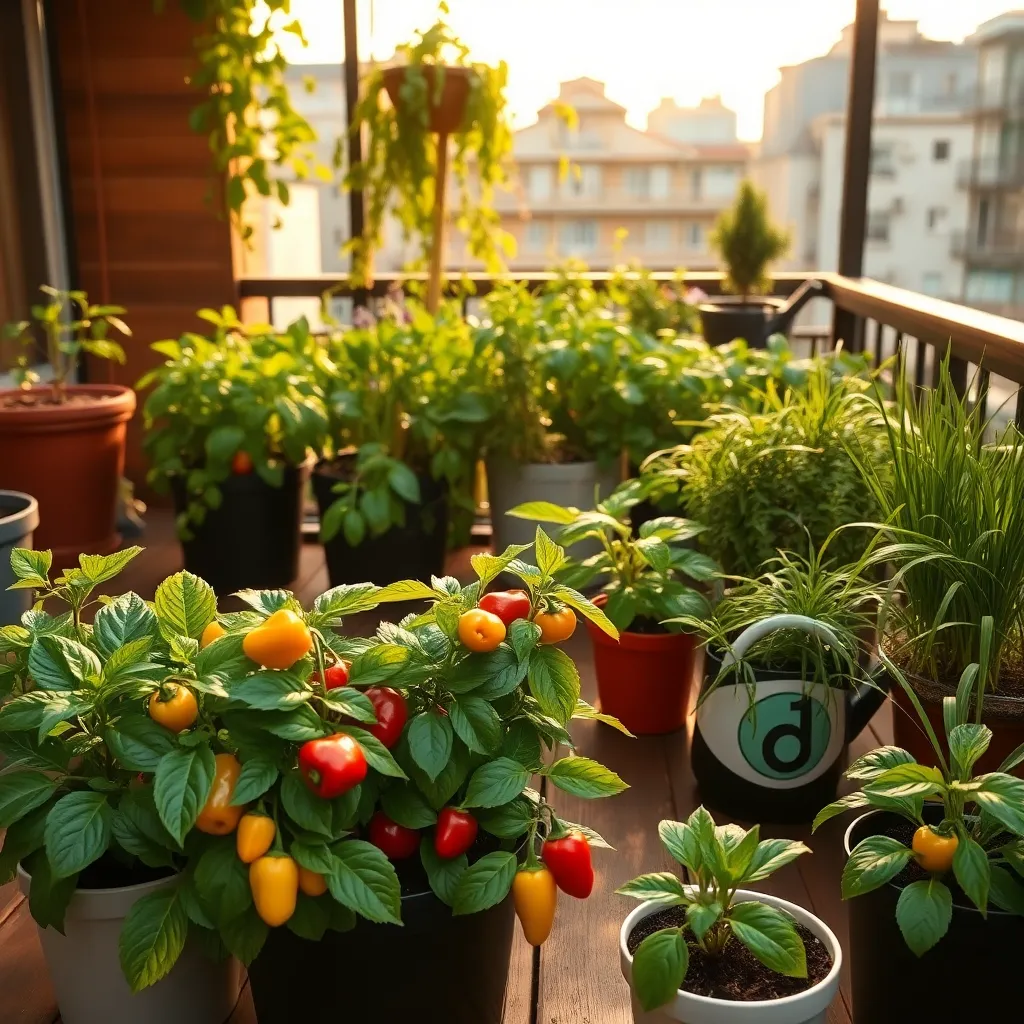
When growing peppers in small spaces, selecting the right compact varieties is crucial for success. Compact pepper varieties like ‘Mini Bell’, ‘Jalapeno Early’, and ‘Habanero Short’ are perfect for container gardening due to their smaller size and productivity.
These varieties typically mature at a height of 12 to 24 inches, making them ideal for pots or small garden plots. To thrive, they require well-draining soil rich in organic matter and need to be placed in a location that receives at least 6 hours of sunlight daily.
Watering is a key factor in growing healthy compact pepper plants. Maintain consistent moisture by watering when the top inch of soil feels dry, but be cautious of overwatering, which can lead to root rot.
Advanced gardeners can enhance growth by using a balanced fertilizer every two weeks, especially during the growing season. Consider using a liquid fertilizer with a ratio of 5-10-10 to ensure a steady supply of nutrients that encourages fruit production without excessive foliage growth.
Use Space-Efficient Containers
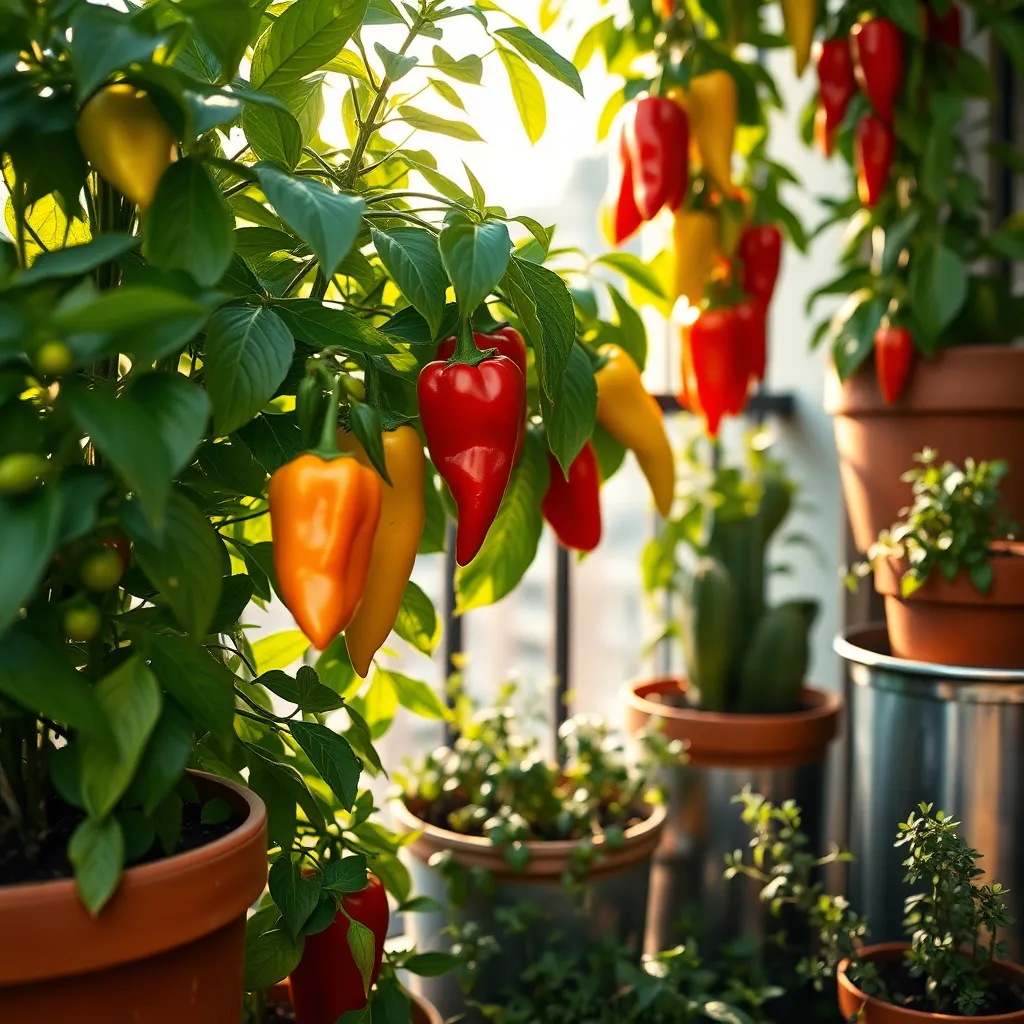
To make the most out of limited space, choose vertical containers or use tiered plant stands to maximize your growing area. These options allow you to stack multiple pots, creating a mini garden tower that is both space-efficient and visually appealing.
Consider using self-watering pots to maintain consistent moisture levels, which is crucial for healthy pepper growth. This type of container helps reduce the frequency of watering, making it easier to manage plant care in confined spaces.
For improved drainage, select containers with adequate drainage holes and use a high-quality potting mix designed for vegetables. This ensures that excess water can escape, preventing root rot and promoting healthier plants.
Incorporate companion planting by placing herbs like basil or oregano in the same container as your peppers. This not only saves space but also enhances flavor and can help deter pests naturally, creating a thriving mini ecosystem.
Optimize Sunlight Exposure
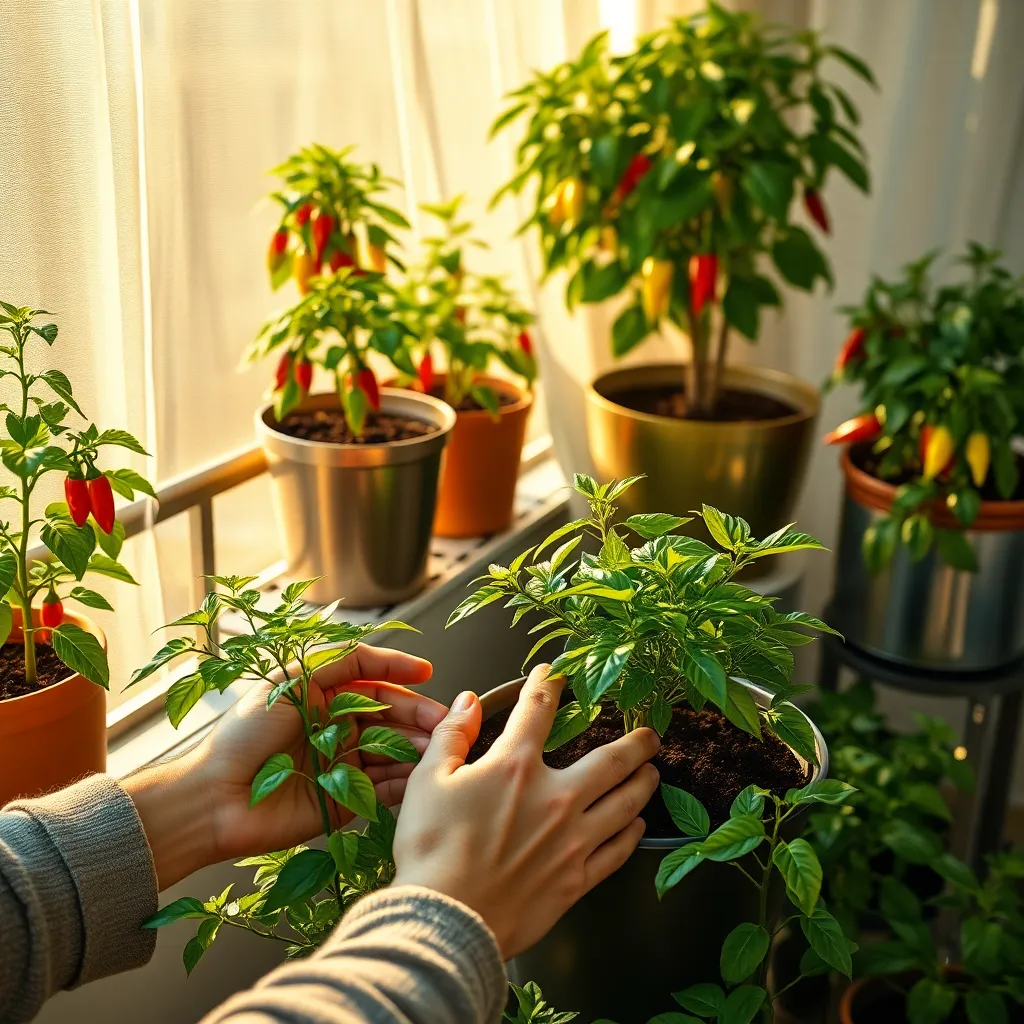
To make the most of your small space when growing peppers, focus on optimizing sunlight exposure. Peppers thrive in full sun, requiring at least six to eight hours of direct sunlight each day for the best growth and fruit production.
Position your containers in the sunniest spot available, such as a south-facing balcony or windowsill. If outdoor space is limited, consider using reflective surfaces nearby to increase the light exposure to your plants.
For gardeners with limited direct sunlight, using grow lights can be an effective alternative. Invest in LED grow lights, which are energy-efficient and can be adjusted to provide the ideal spectrum for pepper plants.
Regularly rotate your containers to ensure that all sides of the plant receive equal sunlight, promoting even growth. This simple practice can prevent your plants from becoming leggy and encourages a more compact, bushy form.
Implement Vertical Growing Techniques
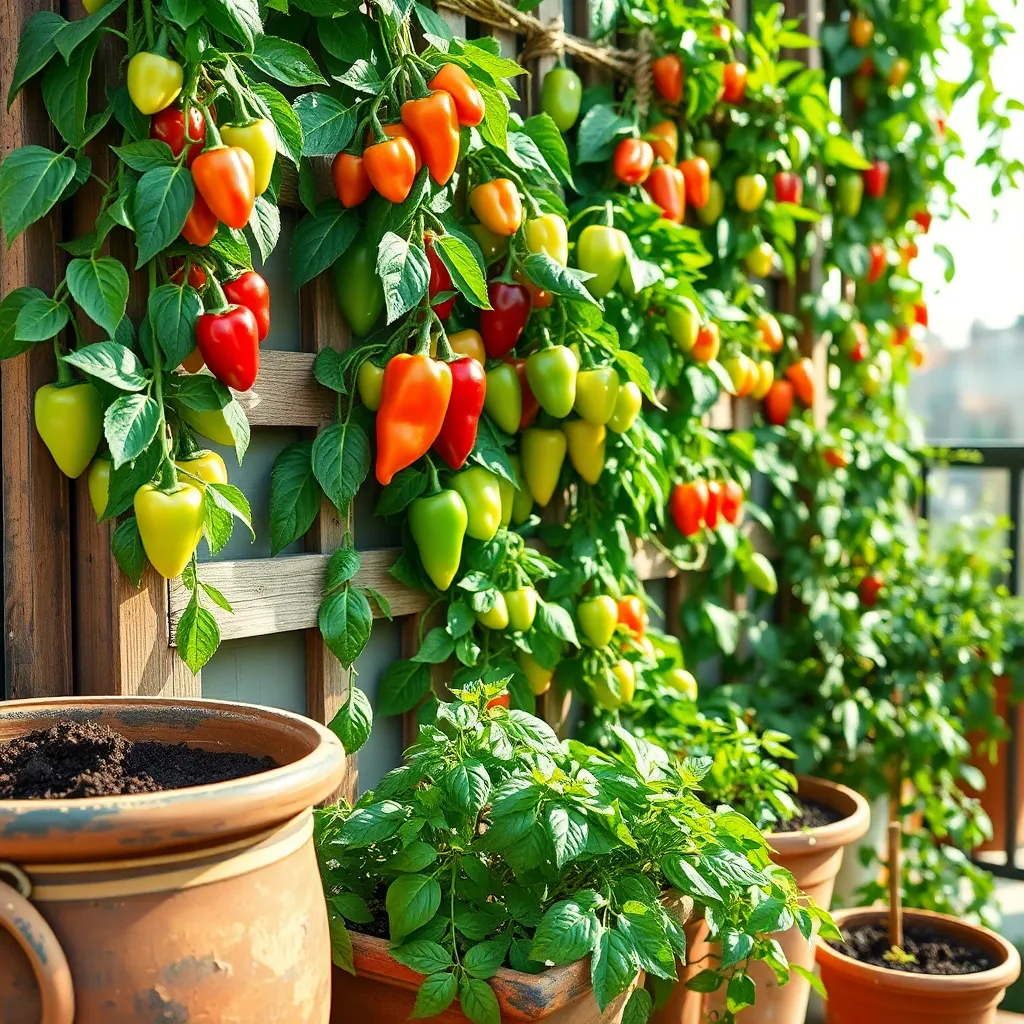
Vertical growing techniques are a fantastic solution for maximizing space while cultivating peppers. By utilizing structures like trellises or stakes, you can guide your peppers to grow upwards, freeing up valuable ground space for other plants.
Invest in a sturdy trellis or build a simple one using wooden stakes and twine. Ensure the support is strong enough to hold the weight of mature pepper plants, which can become quite heavy when laden with fruit.
As your pepper plants grow, gently tie the stems to the trellis using soft garden ties or strips of cloth. This practice not only keeps the plants upright but also improves air circulation, which can reduce the risk of disease.
Consider growing compact or dwarf pepper varieties, which are naturally better suited for vertical growth. Varieties like ‘Mini Bell’ or ‘Hungarian Wax’ are excellent choices for small spaces and are easy to manage on a trellis.
Practice Consistent Watering Regimen
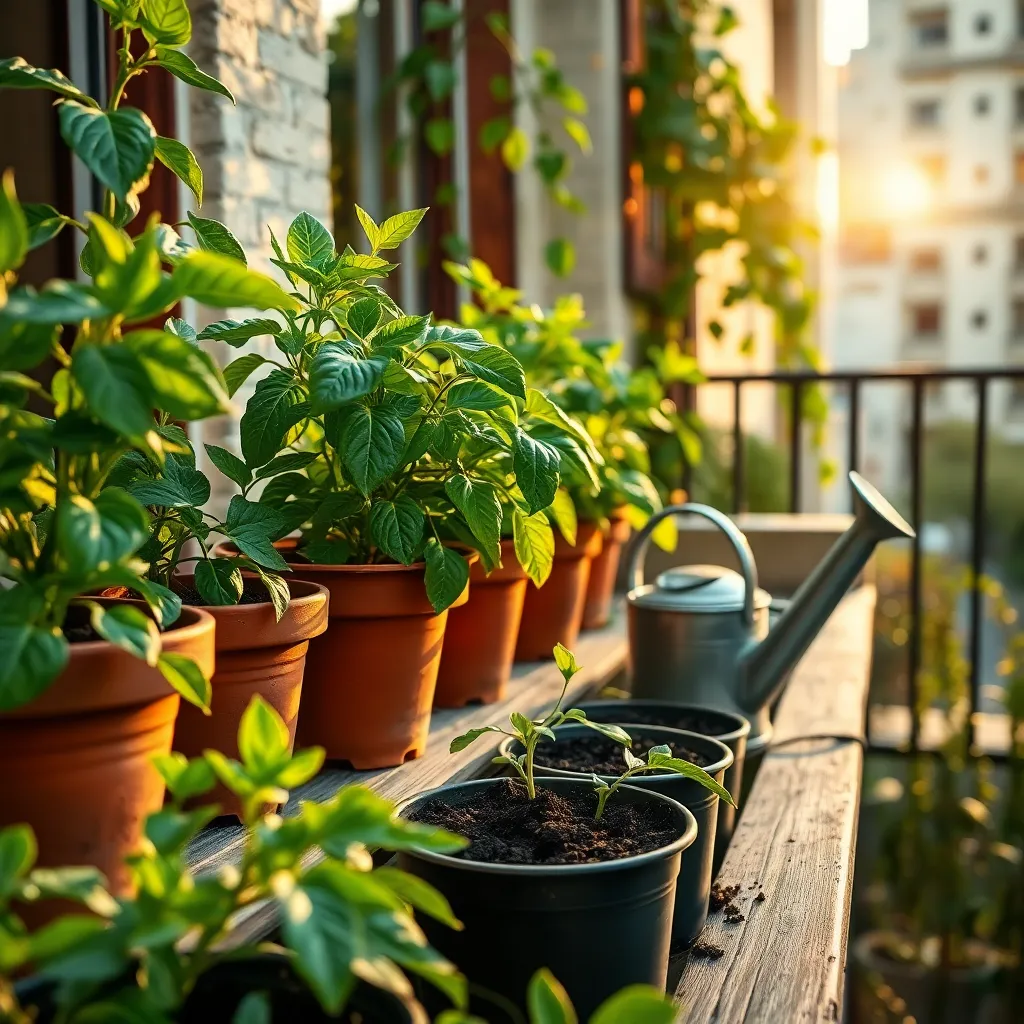
Consistent watering is crucial for growing healthy peppers, especially in small spaces where soil volume is limited. Peppers require a balance; they need enough moisture to thrive but should never sit in soggy soil. Implementing a regular watering schedule can help maintain this balance and ensure your pepper plants are neither too dry nor too wet.
One of the best ways to ensure consistent watering is by using a drip irrigation system or self-watering planters. These methods provide a steady supply of moisture directly to the plant roots, minimizing evaporation and reducing the risk of overwatering. For gardeners who prefer manual watering, aim to water your pepper plants every 2 to 3 days, adjusting based on weather conditions and soil moisture levels.
Monitoring soil moisture is essential, and a simple tool like a moisture meter can be invaluable. If you don’t have a moisture meter, simply check the soil by sticking your finger about an inch deep into the soil; it should feel slightly moist but not wet. Adjust your watering routine based on the soil’s moisture to maintain optimal growing conditions for your peppers.
As an advanced tip, consider using mulch to help retain soil moisture and keep the root zone cooler. Mulching can reduce the frequency of watering needed and help prevent weeds, which compete for water and nutrients. Organic mulches like straw or shredded leaves are excellent choices and will decompose over time, adding nutrients to the soil.
Conclusion: Growing Success with These Plants
In nurturing your pepper plants in small spaces, you’ve also cultivated key relationship skills that transcend the garden. First, communication is vital; just as you must understand your plants’ needs, effective communication is the cornerstone of any thriving relationship. Second, patience is crucial; both peppers and relationships flourish with time and care. Third, adaptability allows you to adjust to changing conditions, ensuring success whether in soil or in love. Fourth, attention to detail ensures you notice the subtle signs your plants or partner may be sending. Finally, commitment solidifies your dedication, whether to a bountiful harvest or a fulfilling partnership.
As a next step, consider applying these insights by scheduling a dedicated time each week to nurture your relationships, just as you would with your plants. Save this article as a handy reference to remind you of these valuable lessons. Simply bookmark it now to revisit when you need a refreshing perspective.
Remember, just as every pepper plant holds the potential for a rich yield, every relationship has the promise of flourishing with the right care. Embrace these insights to nurture not only your garden but also your most cherished connections.

